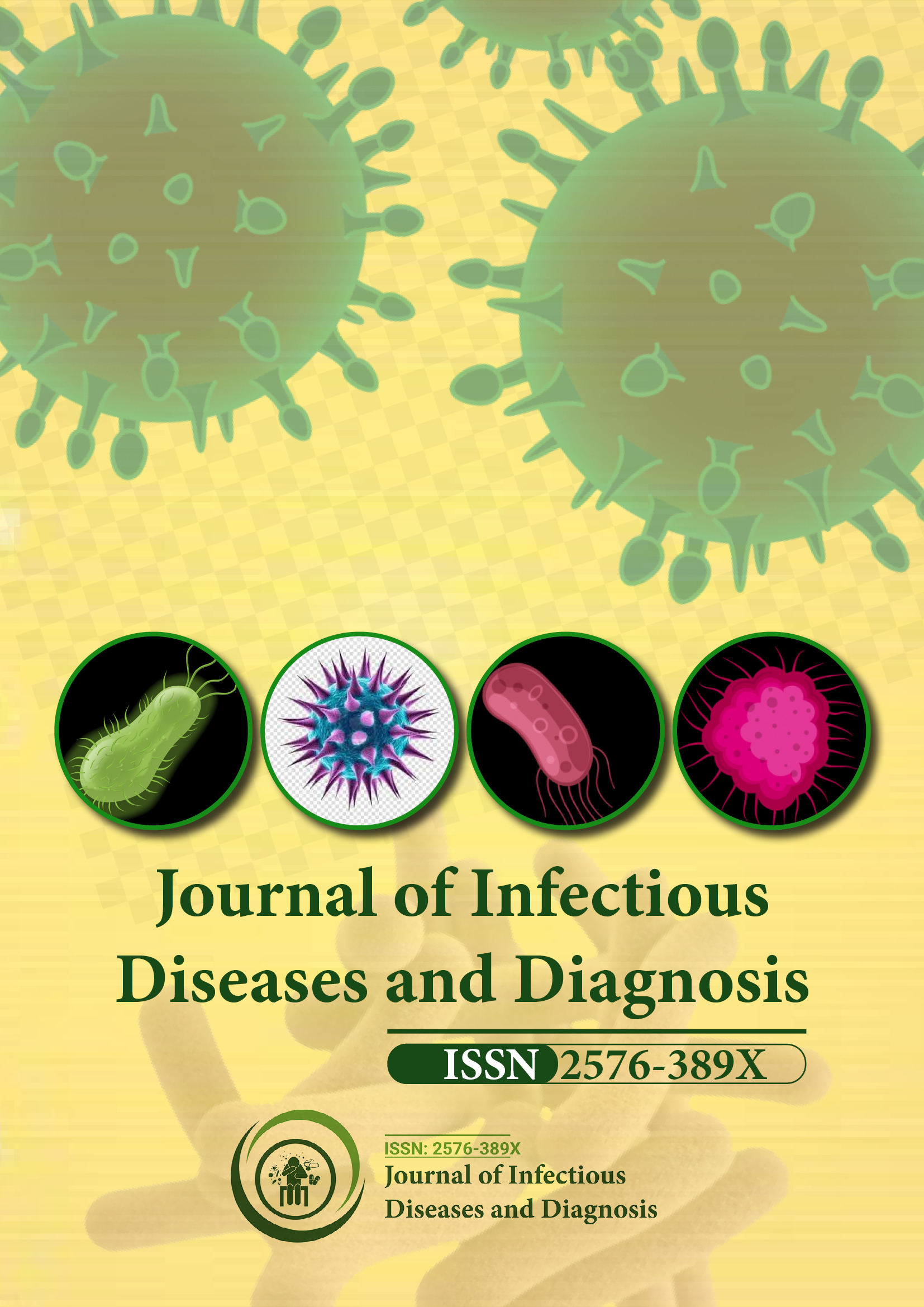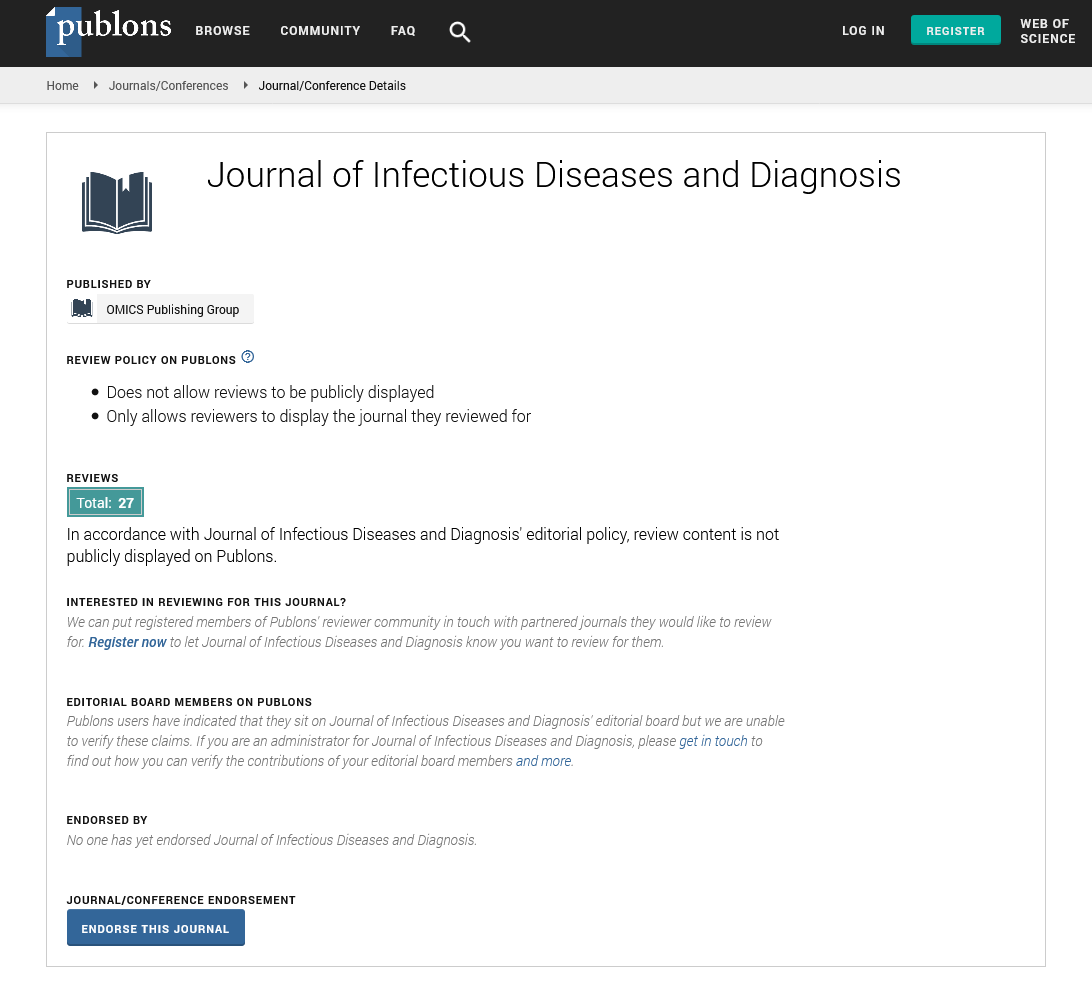Indexed In
- RefSeek
- Hamdard University
- EBSCO A-Z
- Publons
- Euro Pub
- Google Scholar
Useful Links
Share This Page
Journal Flyer

Open Access Journals
- Agri and Aquaculture
- Biochemistry
- Bioinformatics & Systems Biology
- Business & Management
- Chemistry
- Clinical Sciences
- Engineering
- Food & Nutrition
- General Science
- Genetics & Molecular Biology
- Immunology & Microbiology
- Medical Sciences
- Neuroscience & Psychology
- Nursing & Health Care
- Pharmaceutical Sciences
Perspective - (2025) Volume 10, Issue 4
Colon Infections: Etiology, Pathophysiology, Clinical Features and Management Approaches
Imam Akhtar*Received: 30-Jun-2025, Manuscript No. JIDD-25-29510; Editor assigned: 03-Jul-2025, Pre QC No. JIDD-25-29510 (PQ); Reviewed: 17-Jul-2025, QC No. JIDD-25-29510; Revised: 24-Jul-2025, Manuscript No. JIDD-25-29510 (R); Published: 31-Jul-2025, DOI: 10.35248/2576-389X.25.10.343
Description
The colon, an essential part of the gastrointestinal tract, plays an important role in water absorption, electrolyte balance and the processing of undigested food. It also forms a complex microbial community that contributes to digestion and immune regulation. When the normal balance of this system is disturbed or when harmful organisms invade, colon infection can occur. Such infections are common worldwide and may range from mild discomfort to life-threatening conditions depending on the underlying cause, the host’s immune status and the timeliness of medical intervention.
Etiology of colon infections
Colon infections are caused by a wide variety of pathogens, including bacteria, viruses and parasites. Bacterial infections are among the most common, with Clostridioides difficile, Escherichia coli, Salmonella, Shigella and Campylobacter frequently implicated. Clostridioides Difficile Infection (CDI) is of particular importance in hospital settings, where antibiotic exposure can disrupt the natural gut flora, enabling overgrowth of the bacterium and toxin production that damages the intestinal lining.
Viral causes, such as norovirus or rotavirus, often spread rapidly in communities and institutions, leading to outbreaks of gastrointestinal illness. Parasitic infections, including Entamoeba histolytica and Giardia lamblia, are more common in regions with inadequate sanitation and contaminated water supplies.
Pathophysiology
The development of colon infection involves complex interactions between invading pathogens, the gut microbiome and host defenses. Normally, the colon’s resident bacteria provide a protective barrier by occupying niches and producing antimicrobial substances. When this barrier is compromised for instance, after antibiotic therapy the environment becomes conducive to colonization by harmful organisms.
Pathogens can attach to the mucosal surface, release toxins, or directly invade cells. For example, Shigella penetrates colonic epithelial cells, causing inflammation and tissue destruction, while C. difficile produces toxins A and B, which disrupt cell junctions and trigger inflammation. These processes result in impaired absorption, secretion of fluids and damage to the mucosal lining, leading to the characteristic symptoms of diarrhea, abdominal pain and sometimes bloody stools.
Clinical presentation
Symptoms of colon infection vary depending on the pathogen, the severity of infection and patient factors. Common manifestations include watery diarrhea, abdominal cramping, bloating and fever. Some infections, such as those caused by Shigella or E. histolytica, may lead to bloody diarrhea (dysentery) due to tissue invasion and ulcer formation. In CDI, patients often present with profuse watery diarrhea, fever, nausea and leukocytosis; severe cases may progress to toxic megacolon, perforation, or sepsis if untreated.
Chronic or recurrent infections can lead to prolonged gastrointestinal discomfort, weight loss, dehydration and impaired nutrient absorption. Immunocompromised individuals, such as transplant recipients or those undergoing chemotherapy, are particularly vulnerable to severe disease.
Diagnosis
Accurate diagnosis of colon infection relies on a combination of clinical evaluation, laboratory testing and sometimes imaging. Stool examination remains a primary tool, helping to identify bacterial pathogens, parasites, or viral antigens. Molecular techniques such as Polymerase Chain Reaction (PCR) assays are increasingly used to detect pathogens with high sensitivity and specificity. In CDI, toxin detection assays or nucleic acid amplification tests confirm the diagnosis.
Endoscopy may be indicated in certain cases, particularly when inflammatory bowel disease must be distinguished from infection. Imaging studies like CT scans can reveal complications such as perforation, colonic dilation, or abscess formation.
Management
The treatment of colon infections depends on the underlying cause, severity and patient condition. Supportive care, including hydration and electrolyte replacement, is essential for all patients to prevent dehydration.
Antibiotic therapy is indicated for bacterial infections, but selection should be guided by the pathogen identified. For CDI, standard therapies include oral vancomycin or fidaxomicin, while metronidazole is sometimes used in less severe cases. In recurrent CDI, fecal microbiota transplantation has emerged as an effective strategy to restore the natural gut flora and reduce recurrence rates.
Parasitic infections require specific anti-parasitic agents such as metronidazole for E. histolytica or tinidazole for Giardia lamblia. Viral infections are usually self-limiting and management primarily involves supportive care. In immunocompromised patients, antiviral therapy may occasionally be required.
Prevention
Prevention strategies focus on hygiene, sanitation and prudent use of antibiotics. Hand hygiene, safe food preparation and access to clean water are effective measures to reduce transmission of pathogens. In healthcare environments, infection control practices, including isolation of affected patients and environmental cleaning, are particularly important for preventing CDI.
Antibiotic stewardship programs help minimize unnecessary use of broad-spectrum antibiotics, thereby reducing the risk of disrupting the gut microbiota and lowering CDI incidence. Vaccination research is ongoing, particularly for C. difficile and certain bacterial pathogens, offering potential tools for future prevention.
Complications
If untreated or inadequately managed, colon infections can lead to serious complications. Severe dehydration, electrolyte imbalance and septicemia may occur, particularly in vulnerable populations. Chronic infections can result in malnutrition and impaired growth in children. In cases of CDI, complications include toxic mega-colon and bowel perforation, both associated with high mortality.
Conclusion
Colon infections represent a significant health challenge worldwide, arising from diverse pathogens and presenting with a wide range of clinical manifestations. Understanding their etiology, mechanisms and clinical features is essential for accurate diagnosis and effective treatment. While supportive care and pathogen-specific therapies remain the mainstay of management, preventive strategies such as hygiene practices, antibiotic stewardship and infection control measures are equally important. Continued research into novel diagnostic methods, therapeutic interventions and vaccines will further improve outcomes for patients affected by colon infections.
Citation: Akhtar I (2025). Colon Infections: Etiology, Pathophysiology, Clinical Features and Management Approaches. J Infect Dis Diagn. 10:343.
Copyright: © 2025 Akhtar I. This is an open-access article distributed under the terms of the Creative Commons Attribution License, which permits unrestricted use, distribution and reproduction in any medium, provided the original author and source are credited.

